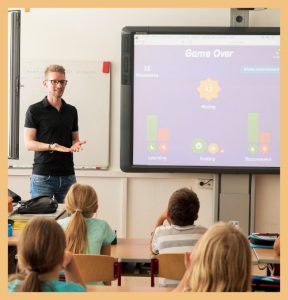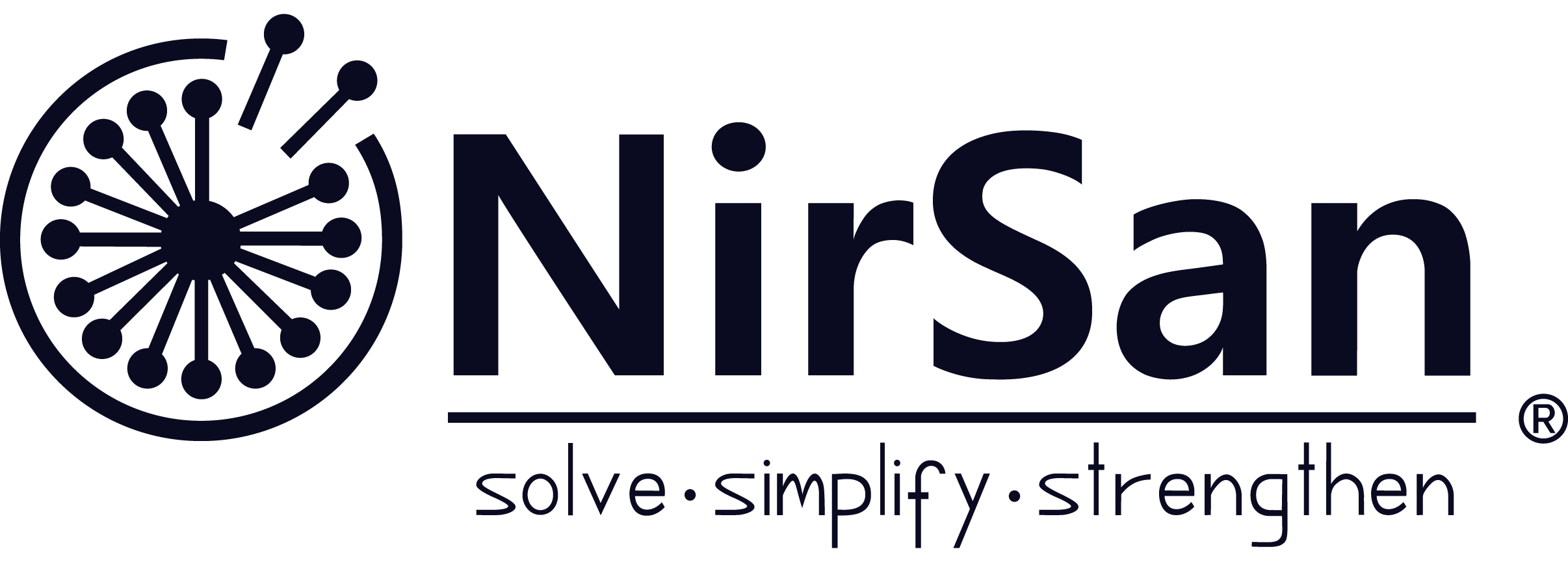
What is LEARNVIRON®?

LEARNVIRON® profiles the school’s environment along its four constitutive domains (i.e., pedagogic, enabling, operational, governance) and their eleven components (i.e., student learning and assessment; vision and identity; teacher capacity and leadership; learning goals and curriculum; infrastructure, health and safety; organising; delivery operations; parent and community outreach; financial health management; principal and school leadership role; and board governance). It provides a clear and in-depth assessment of the school’s nurturance environment; the extent to which the four environmental domains are synergised and interlinked; and the extent to which the environment helps the school leadership in achieving the school’s student learning and student outcome goals.
LEARNVIRON® profiles the school’s environment along its four constitutive domains (i.e., pedagogic, enabling, operational, governance) and their eleven components (i.e., student learning; vision; teacher capacity; learning curriculum; health and safety; organising; operations; parent and community; financial health; principal and school leadership role; and board governance). It profiles in depth the school’s nurturance environment, the synergies and interlinkages between the four environmental domains, and its impact on school leadership and student learning and development outcomes.
LEARNVIRON® profiles the school’s environment along its four constitutive domains (i.e., pedagogic, enabling, operational, governance) and their eleven components (i.e., student learning; vision; teacher capacity; learning curriculum; health and safety; organising; operations; parent and community; financial health; principal and school leadership role; and board governance). It profiles in depth the school’s nurturance environment, the synergies and interlinkages between the four environmental domains, and its impact on school leadership and student learning and development outcomes.
LEARNVIRON® profiles the school’s environment along its four constitutive domains (i.e., pedagogic, enabling, operational, governance) and their eleven components (i.e., student learning; vision; teacher capacity; learning curriculum; health and safety; organising; operations; parent and community; financial health; principal and school leadership role; and board governance). It profiles in depth the school’s nurturance environment, the synergies and interlinkages between the four environmental domains, and its impact on school leadership and student learning and development outcomes.
Why worry about "school environment"? Why get LEARNVIRON®?
Research in Ethology and Neo-Nativist Psychology during the last century, have attempted to make sense of innateness claims, particularly in linguistics and psychology. In opposition to such claims, research in Developmental Psychobiology has driven the scepticism about the distinction between innate and acquired traits, and has strengthened the case for the sensitive dependence of trait development on environmental parameters. LEARNVIRON® believes that human behaviour development takes place through gene-environmental interaction within a Development System. Schools are developmental systems that have the added responsibility of having to be nurturing environments. No doubt school principals consider the establishing of nurturing environments to be their top priority.
Ethology and Neo-Nativist Psychology have attempted, over the last century, to make sense of innateness claims, notably in the domain of linguistics. In opposition, Developmental Psychobiology has argued for the distinction between innate and acquired traits, and the sensitive dependence of trait building on the environment. LEARNVIRON® believes that behaviour development results from gene-environment interaction within a "development system" such as schools, which have the added responsibility of nurturance of its students. No doubt school principals consider nurturing environments to be their top priority.
Ethology and Neo-Nativist Psychology have attempted, over the last century, to make sense of innateness claims, notably in the domain of linguistics. In opposition, Developmental Psychobiology has argued for the distinction between innate and acquired traits, and the sensitive dependence of trait building on the environment. LEARNVIRON® believes that behaviour development results from gene-environment interaction within a "development system" such as schools, which have the added responsibility of nurturance of its students. No doubt school principals consider nurturing environments to be their top priority.
Ethology and Neo-Nativist Psychology have attempted, over the last century, to make sense of innateness claims, notably in the domain of linguistics. In opposition, Developmental Psychobiology has argued for the distinction between innate and acquired traits, and the sensitive dependence of trait building on the environment. LEARNVIRON® believes that behaviour development results from gene-environment interaction within a "development system" such as schools, which have the added responsibility of nurturance of its students. No doubt school principals consider nurturing environments to be their top priority.

Who will benefit from LEARNVIRON®?

School principals and governors are the foremost beneficiaries of LEARNVIRON®. The product enables them to assess and understand the school’s environment at disaggregated as well as integrated levels. With help of the LEARNVIRON® framework, school leadership gets tangible and workable solutions to fortify the environment, which lead directly to the improvement of student learning and student outcomes, and a concomitant rise in the school’s reputation. LEARNVIRON® provides a bird’s eye view of where things stand today; an insightful account of possible complexities that might arise tomorrow; and a repository of practical actions that can be taken now. In the end, students gain the most from this environmental assessment and strengthening, due to the resultant rise in growth stimulus and protective cover.
School principals and governors are foremost beneficiaries of LEARNVIRON®, as it helps them assess the school’s environment at disaggregated as well as holistic levels. The LEARNVIRON® framework provides leadership tangible solutions to fortify the school environment, thereby improving student learning outcomes, and raising the school’s reputation. LEARNVIRON® provides a bird’s eye and insightful view of the current situation, of possible complexities tomorrow, and a repository of practical actions for now. In the end, students gain the most, due to the rise in growth stimulus and protective cover.
School principals and governors are foremost beneficiaries of LEARNVIRON®, as it helps them assess the school’s environment at disaggregated as well as holistic levels. The LEARNVIRON® framework provides leadership tangible solutions to fortify the school environment, thereby improving student learning outcomes, and raising the school’s reputation. LEARNVIRON® provides a bird’s eye and insightful view of the current situation, of possible complexities tomorrow, and a repository of practical actions for now. In the end, students gain the most, due to the rise in growth stimulus and protective cover.
School principals and governors are foremost beneficiaries of LEARNVIRON®, as it helps them assess the school’s environment at disaggregated as well as holistic levels. The LEARNVIRON® framework provides leadership tangible solutions to fortify the school environment, thereby improving student learning outcomes, and raising the school’s reputation. LEARNVIRON® provides a bird’s eye and insightful view of the current situation, of possible complexities tomorrow, and a repository of practical actions for now. In the end, students gain the most, due to the rise in growth stimulus and protective cover.
Where (in which settings) should you get LEARNVIRON®?
Get LEARNVIRON® if you are convinced of four realities. Or in other words, if you answer the following questions with a ‘Yes!’. First is the reality of ‘conviction’. Are you convinced of the crucial importance of the school’s environment towards the nurturance of its students? Second is the matter of ‘alignment’. Do you foresee a lack of alignment among your colleagues on what the ‘primary descriptors’ of your school’s environment are? Third is the matter of ‘signals’. Have you been getting signals, either in student outcomes or in day-to-day operating matters, that some aspects of the environment are not quite as desired? Fourth is the matter of ‘opportunity’. Do you feel student outcomes could improve from strengthening the environment? If you answered ‘Yes!’ to all four questions, you need LEARNVIRON®.
Get LEARNVIRON® if you are convinced of any of four realities. First, ‘conviction’: are you convinced of the critical role of the school’s environment in nurturing students? Second, ‘alignment’: is there misalignment among your colleagues on what the ‘primary descriptors’ of your school’s environment are? Third, ‘signals’: have you got signals, in student outcomes and operations, that some environmental aspects are lagging behind? Fourth, ‘opportunity’: would environmental strengthening raise student outcomes? If you answered ‘Yes!’ to one or more, you need LEARNVIRON®.
Get LEARNVIRON® if you are convinced of any of four realities. First, ‘conviction’: are you convinced of the critical role of the school’s environment in nurturing students? Second, ‘alignment’: is there misalignment among your colleagues on what the ‘primary descriptors’ of your school’s environment are? Third, ‘signals’: have you got signals, in student outcomes and operations, that some environmental aspects are lagging behind? Fourth, ‘opportunity’: would environmental strengthening raise student outcomes? If you answered ‘Yes!’ to one or more, you need LEARNVIRON®.
Get LEARNVIRON® if you are convinced of any of four realities. First, ‘conviction’: are you convinced of the critical role of the school’s environment in nurturing students? Second, ‘alignment’: is there misalignment among your colleagues on what the ‘primary descriptors’ of your school’s environment are? Third, ‘signals’: have you got signals, in student outcomes and operations, that some environmental aspects are lagging behind? Fourth, ‘opportunity’: would environmental strengthening raise student outcomes? If you answered ‘Yes!’ to one or more, you need LEARNVIRON®.

How does LEARNVIRON® work?

The design of LEARNVIRON® is based on our proprietary framework on ‘developmental nurturance’ called ‘Excellence in Nurturing Environments in Schools’. With LEARNVIRON®, you undergo the four stages of ‘installation’, ‘engagement’, ‘analysis’ and ‘dissemination’ over four weeks. To install LEARNVIRON®, you define research scope and the primary input sources within your school environment. LEARNVIRON® then engages with these primary sources comprising school leadership, governors, teaching and non-teaching staff, parents and a sub-set of students, with the help of specialised instruments that maintain anonymity and objectivity. Statistical analysis is anchored to the proprietary framework, and leads to in-depth communication materials for the school leadership.
LEARNVIRON® design is based on our proprietary framework called ‘Excellence in Nurturing Environments in Schools’. With LEARNVIRON®, you will undergo the four stages of ‘installation’, ‘engagement’, ‘analysis’ and ‘dissemination’ in eight weeks. To install, you will define scope and the primary sources of inputs. LEARNVIRON® will engage with these sources comprising school leadership, governors, teachers, parents and students, through specialised instruments that ensure anonymity and objectivity. Statistical analysis will then lead to in-depth communication materials for school leadership.
LEARNVIRON® design is based on our proprietary framework called ‘Excellence in Nurturing Environments in Schools’. With LEARNVIRON®, you will undergo the four stages of ‘installation’, ‘engagement’, ‘analysis’ and ‘dissemination’ in eight weeks. To install, you will define scope and the primary sources of inputs. LEARNVIRON® will engage with these sources comprising school leadership, governors, teachers, parents and students, through specialised instruments that ensure anonymity and objectivity. Statistical analysis will then lead to in-depth communication materials for school leadership.
LEARNVIRON® design is based on our proprietary framework called ‘Excellence in Nurturing Environments in Schools’. With LEARNVIRON®, you will undergo the four stages of ‘installation’, ‘engagement’, ‘analysis’ and ‘dissemination’ in eight weeks. To install, you will define scope and the primary sources of inputs. LEARNVIRON® will engage with these sources comprising school leadership, governors, teachers, parents and students, through specialised instruments that ensure anonymity and objectivity. Statistical analysis will then lead to in-depth communication materials for school leadership.
When during the academic term should you get LEARNVIRON®?
From the time you are ready to start, LEARNVIRON® requires four weeks for the ‘installing’, ‘engaging’, ‘analysing’ and ‘disseminating’ phases. The best time to get LEARNVIRON® is during the start or the middle period of an academic term (i.e., semester or trimester), for several reasons. First, the school operations are then in rhythm, and not under stress due to end-of-the-term pressures. Second, we find that different constituents of the school are more forthcoming during these times, and their objective views do not get affected due to mounting pressures of an unfinished curriculum. Third, school leadership gets adequate time to reflect on the LEARNVIRON® report and make interventions during the term itself. You can also get LEARNVIRON® at the start of the school’s summer break.
The best time to get LEARNVIRON® is during the early period of an academic term. The advantages are several. First, the school operations are then in rhythm, and not under stress due to end-of-term pressures. Second, we find that different constituents of the school are forthcoming during these times, and their objective views are not affected by the mounting pressures of an unfinished curriculum. Third, school leadership gets adequate time to reflect on the LEARNVIRON® report and intervene during the term itself. You can also get LEARNVIRON® at the start of the summer break.
The best time to get LEARNVIRON® is during the early period of an academic term. The advantages are several. First, the school operations are then in rhythm, and not under stress due to end-of-term pressures. Second, we find that different constituents of the school are forthcoming during these times, and their objective views are not affected by the mounting pressures of an unfinished curriculum. Third, school leadership gets adequate time to reflect on the LEARNVIRON® report and intervene during the term itself. You can also get LEARNVIRON® at the start of the summer break.
The best time to get LEARNVIRON® is during the early period of an academic term. The advantages are several. First, the school operations are then in rhythm, and not under stress due to end-of-term pressures. Second, we find that different constituents of the school are forthcoming during these times, and their objective views are not affected by the mounting pressures of an unfinished curriculum. Third, school leadership gets adequate time to reflect on the LEARNVIRON® report and intervene during the term itself. You can also get LEARNVIRON® at the start of the summer break.

© Copyright 2019  All rights reserved.
All rights reserved.
© Copyright 2019  All rights reserved.
All rights reserved.
© Copyright 2019  All rights reserved.
All rights reserved.
© Copyright 2019  All rights reserved.
All rights reserved.
